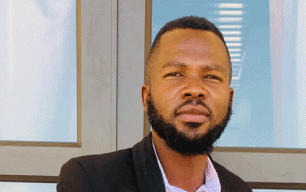Is Namibia’s NDP6 a break from the past or another ambitious wish list?

On 21 July 2025, President Netumbo Nandi-Ndaitwah launched Namibia’s Sixth National Development Plan (NDP6), a blueprint that many are calling the country’s last and most decisive push toward realizing Vision 2030. Coming at a critical moment in Namibia’s democratic journey with a new administration and fresh cabinet appointments, NDP6 has been framed as a turning point.
But beyond the glossy language and optimistic tone, the core question remains: How different is NDP6 from the previous, often unfulfilled development plans? And more importantly, is it realistic and achievable in Namibia’s socio-economic context? NDP6 is structured around four broad pillars: “economic recovery and transformation, human capital development, environmental sustainability and effective governance”.
It presents itself not just as another policy document, but as a practical, urgent response to deep structural issues in Namibia’s economy and society.
One notable difference between NDP6 and its predecessors is the “stronger emphasis on implementation realism”. Previous national development plans (especially NDP4 and NDP5) were often characterized by ambitious targets, such as reducing unemployment by half or growing the manufacturing sector exponentially, without corresponding capacity or resources. NDP6 attempts to break from this tradition by introducing “game-changer” priorities, identified through cost-benefit analysis. These include investments in agriculture value chains, vocational training, TB control, digital infrastructure, and youth mental health.
Despite the fresh energy behind NDP6, many Namibians remain sceptical, and with good reasons. Earlier development plans consistently fell short of their targets. For instance, NDP5 aimed to create “50,000 jobs annually” yet unemployment hovered above 33%, with youth unemployment closer to 48% by 2023. Initiatives like the “Mass Housing Scheme”, envisioned to reduce the housing backlog, failed due to bureaucratic delays, mismanagement, and corruption.
Moreover, the shifting of strategic focus from Vision 2030 to the Harambee Prosperity Plans, and more recently, Green Hydrogen Strategy, has left Namibia with a sense of policy fragmentation and fatigue. Economists like Salomo Hei has pointed out that such frequent changes dilute institutional memory and undermine long-term execution. NDP6 runs the risk of becoming another plan that looks good on paper but suffers in implementation unless it is backed by political consistency and fiscal discipline.
• Sakaria Johannes is a political science and history graduate from the University of Namibia. He can be reached at sackyuutsi@gmail.com
To be continued…….
- 248 views










Comments